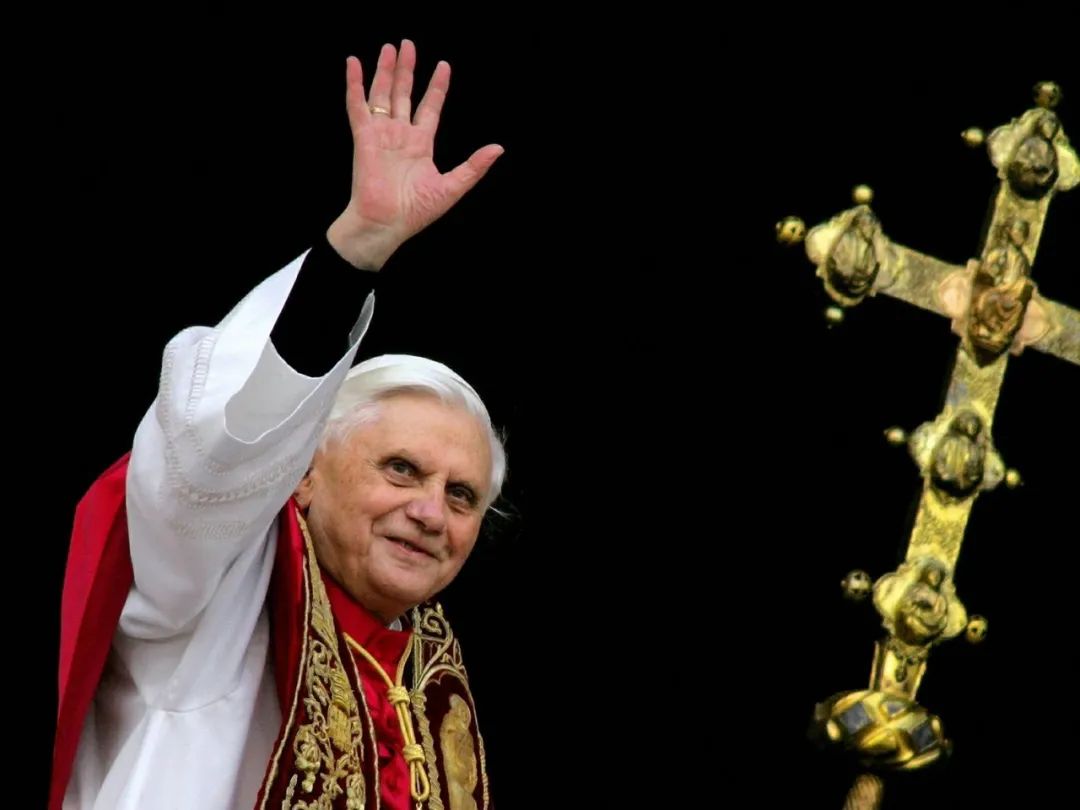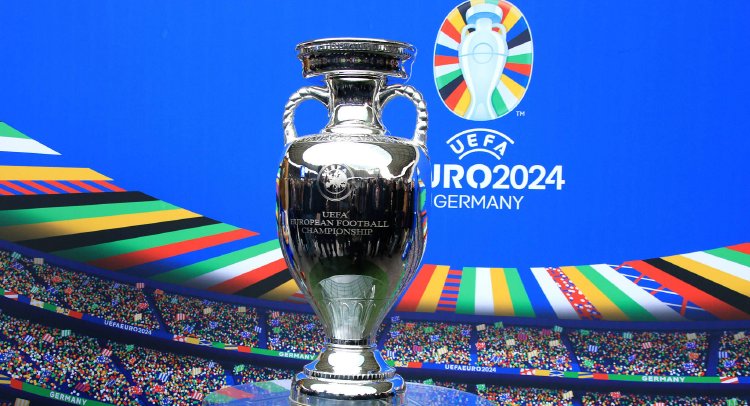On December 31, 2022, former Pope Benedict XVI passed away at the age of 95. He served from 2005 to 2013 and was the first Pope to resign in nearly six centuries, which attracted significant attention. Despite this, he continued to influence the Vatican and the Catholic Church as an honorary Pope. Pope Benedict XVI dedicated his life to promoting beauty and art, laying the foundation for the country’s acceptance of contemporary art. Next, I will introduce to you the “Path of Art” led by this Pope.

In November 2009, over 250 artists, including Anish Kapoor, Bill Viola, and Zaha Hadid, gathered at the Sistine Chapel. In the Vatican, in front of Michelangelo’s “The Last Judgment,” the most important events of the country usually take place: the election of a new Pope. However, that year, Pope Benedict XVI invited “half of the art circle” to “re-establish dialogue” with contemporary art.

Pope Benedict XVI met with artists in the Sistine Chapel in 2009.
The Vatican has witnessed the Renaissance and Baroque art craze, but since modern art has escaped from galleries and museums and popular culture has turned secular, the church has also retreated to a traditional position. How effective is this olive branch that the Pope has extended to the art world? Perhaps, this unusual public relations event is gradually breaking the ice between the two, allowing the Vatican to return to the field of view of the art world. In his short tenure, we have already been able to see changes.
01 Meeting with half the art world
Michelangelo’s “The Last Judgment” (The Last Judgement) (detail), fresco, 1370x1220cm, 1534-1541.

During the Renaissance, which work could rival “The Genesis”? In 2010, Raphael’s four tapestries depicting the lives of Saints Peter and Paul were exhibited at the V&A Museum in London to commemorate the Pope’s visit to the UK that year. This was also the first “union” of the tapestries and the artist’s sketches for the tapestries. The series of tapestries is housed in the Vatican Museums and was made for the Sistine Chapel, consisting of ten pieces, and is jointly known as the “Parthenon of Modern Art” with “The Genesis.”
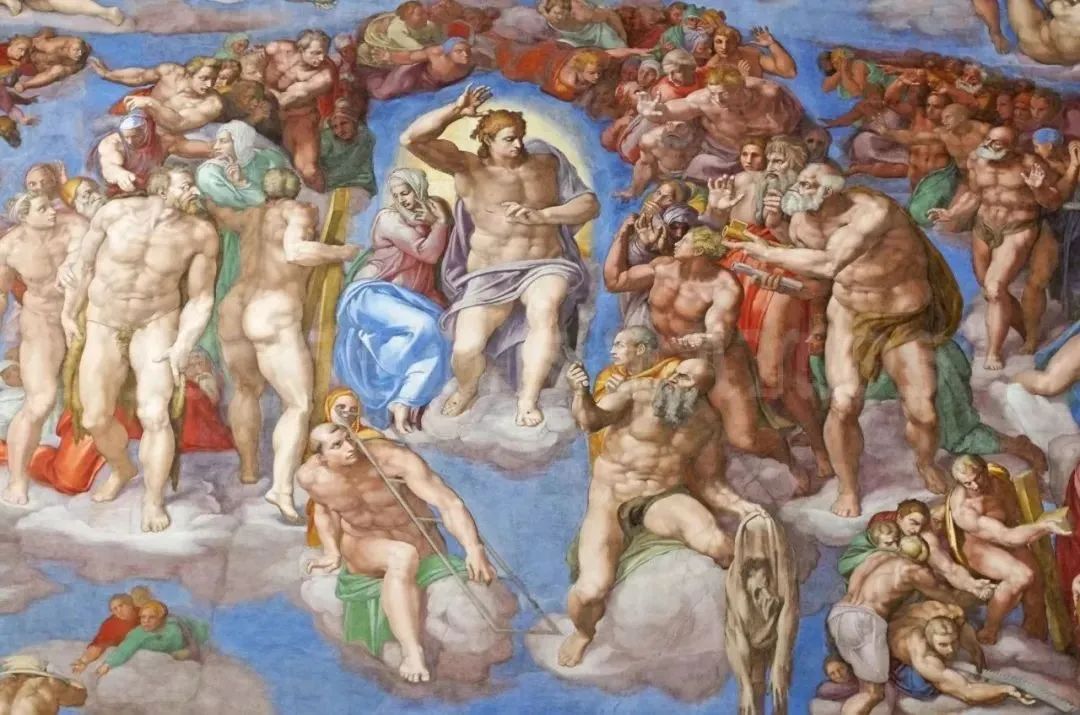
One of the four Raphael tapestries loaned by the Vatican Museums to the V&A Museum, “The Healing of the Lame Man,” in 2010.
02 Generous Vatican
Raphael’s tapestries and Michelangelo’s fresco “The Creation” in the Sistine Chapel.
Obviously, the Pope was generous. In addition to personally participating in the loan of the tapestries, he also lent Raphael’s altarpiece “Madonna of Foligno” from the Dresden Old Masters Picture Gallery (Gemäldegalerie Alte Meister). It was hung next to “The Sistine Madonna” – 500 years ago, the two works were once placed together in the artist’s studio.
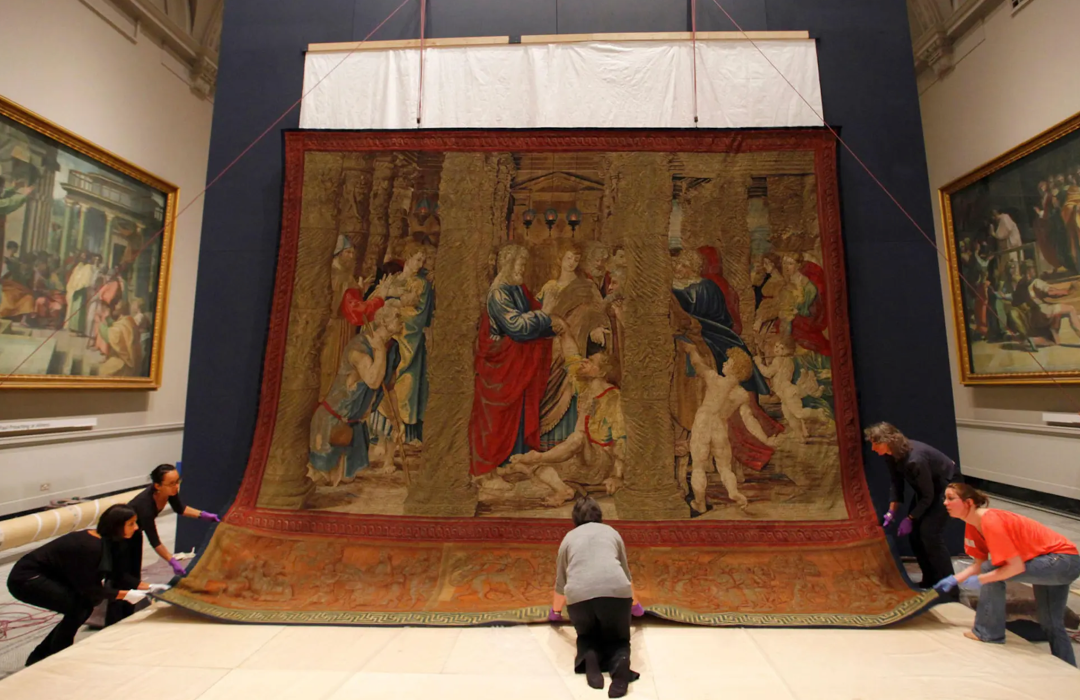
Raphael’s “Madonna of Foligno,” oil on wood, 320×194 cm, 1511-1512.

Raphael’s “Sistine Madonna” (Sistine Madonna), oil on canvas, 265×196cm, 1513-1514.
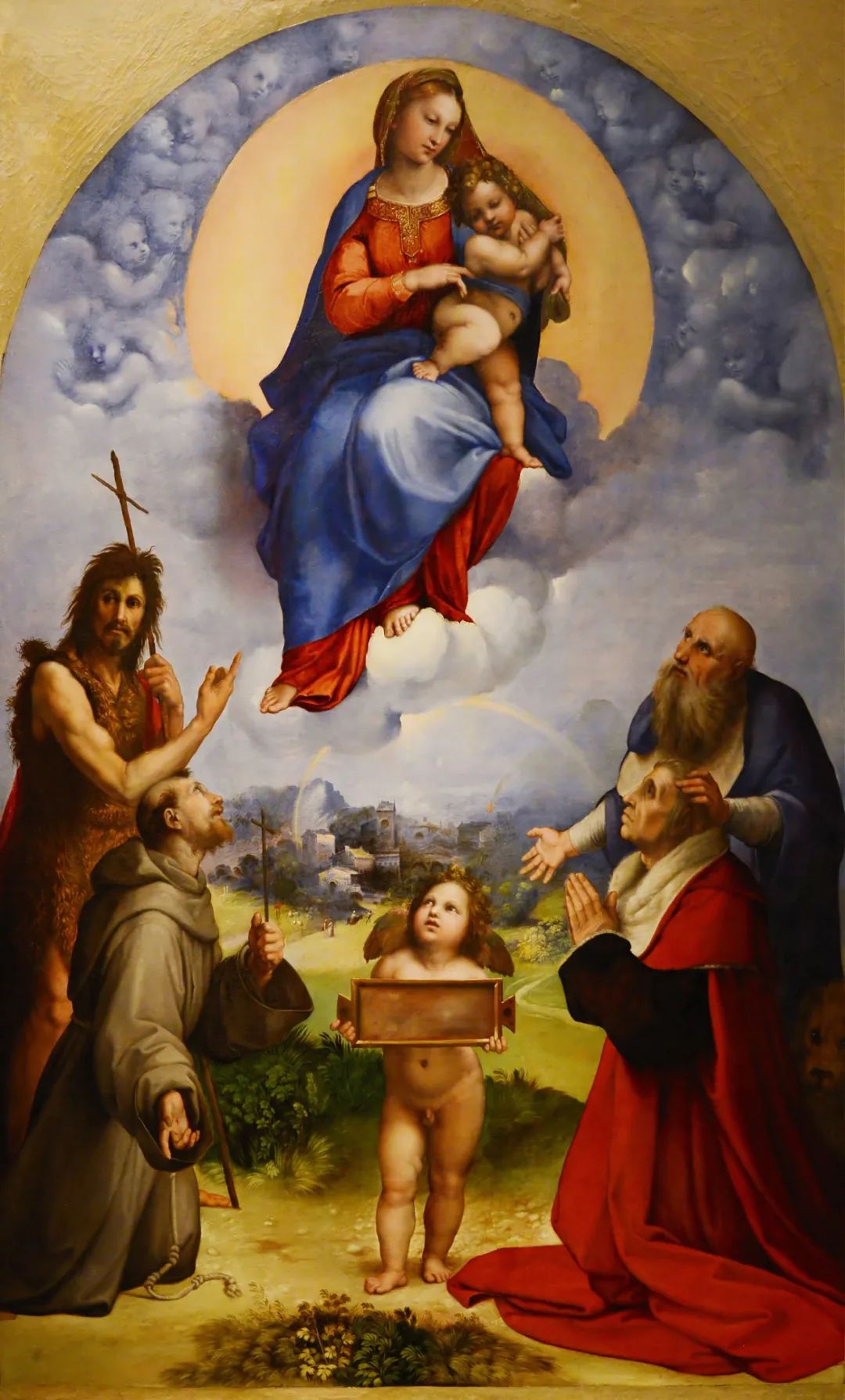
In November 2021, a twelve-pointed star weighing 5.5 tons was officially topped for the Virgin Mary Tower of the Sagrada Família. After 139 years, the legendary church, which consumed over 40 years of the architect Antoni Gaudí’s efforts, finally achieved a “phase victory”. Going back to 2010, the building welcomed a “distinguished guest”: Pope Benedict XVI. After his consecration, the Sagrada Família was crowned with the title of “Basilica”.

The Sagrada Familia Cathedral is topped with a twelve-pointed star, 2021.
03 Canonization of the Sagrada Familia
Sagrada Familia Cathedral Exterior Sculptures
As early as 1984, the Sagrada Familia was listed as a UNESCO World Heritage site, but it has not been completed to this day. However, after the Pope’s visit, it has become even more glorious. In 2026, will this “Basilica” consecrated by him be completed as scheduled? It is worth looking forward to.

Sagrada Família Cathedral

The Catholic Church has been an important art collector and patron. For example, Pope Julius II has achieved Raphael, and he commissioned the artist to create four important rooms for the Vatican Museums. “The School of Athens” is now located in the “Stanza della Segnatura”. However, with the rise of capital and the expansion of the market, in recent decades, the country’s art events can be described as few and far between.
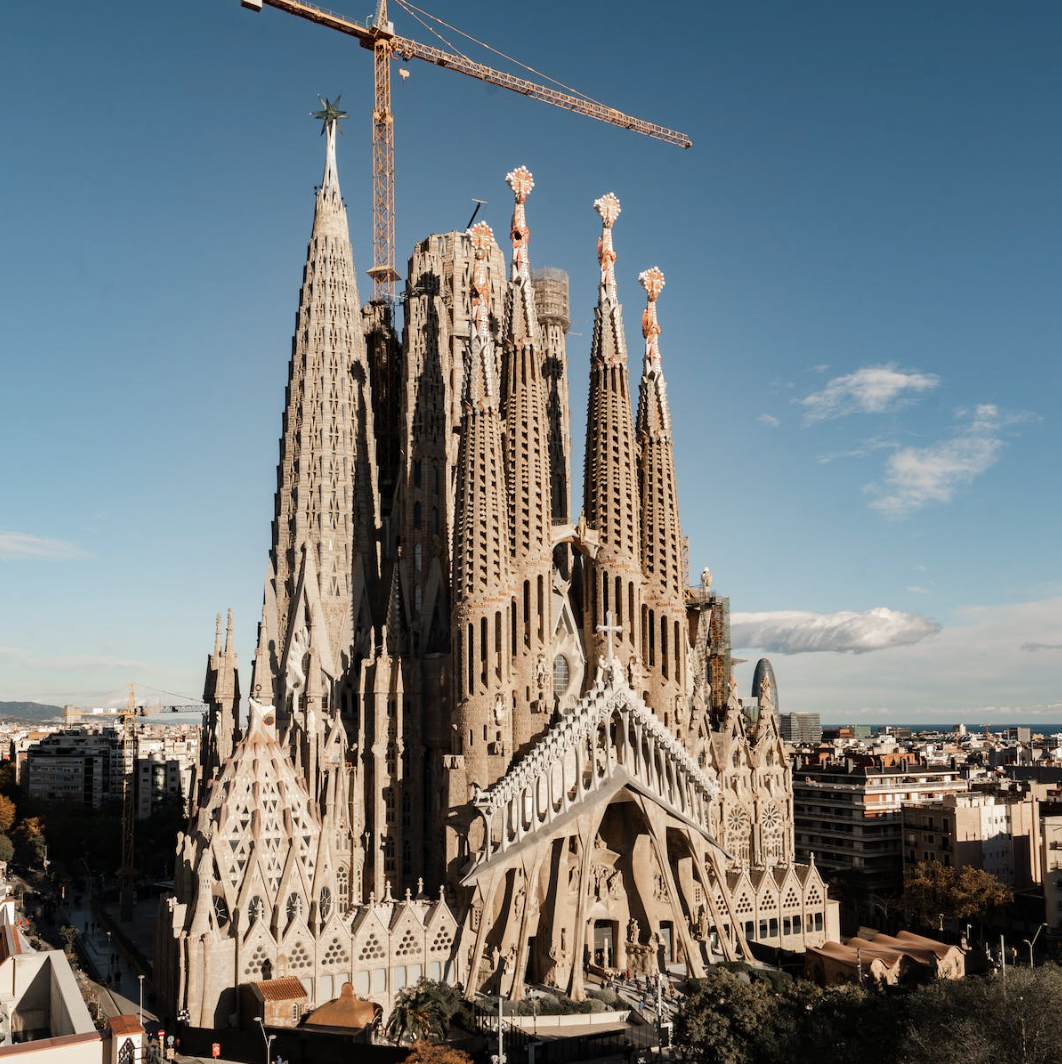
Raphael’s “Portrait of Julius II” (Portrait of Julius II), oil on wood panel, 108×80.7cm, 1511-1512.
04 “Novice” sponsors
Raphael’s “The School of Athens,” fresco, 500x770cm, 1509-1511.
In 2007, Italian artist Claudio Parmiggiani was commissioned by Pope Benedict XVI to create a two-meter-tall painting for the Vatican Museums; in 2010, German artist Michael Triegel painted a portrait of the Pope, who praised him, saying, “Oh, you are my Raphael!”
More wonderfully, this Pope also praised Jewish artist Marc Chagall… Look, since Pope Benedict XVI, the Catholic Church’s attitude towards art has undergone a subtle change.

Michael Triegel, “Portrait of Pope Benedict XVI,” mixed media on wood panel, 100.5×76cm, 2010
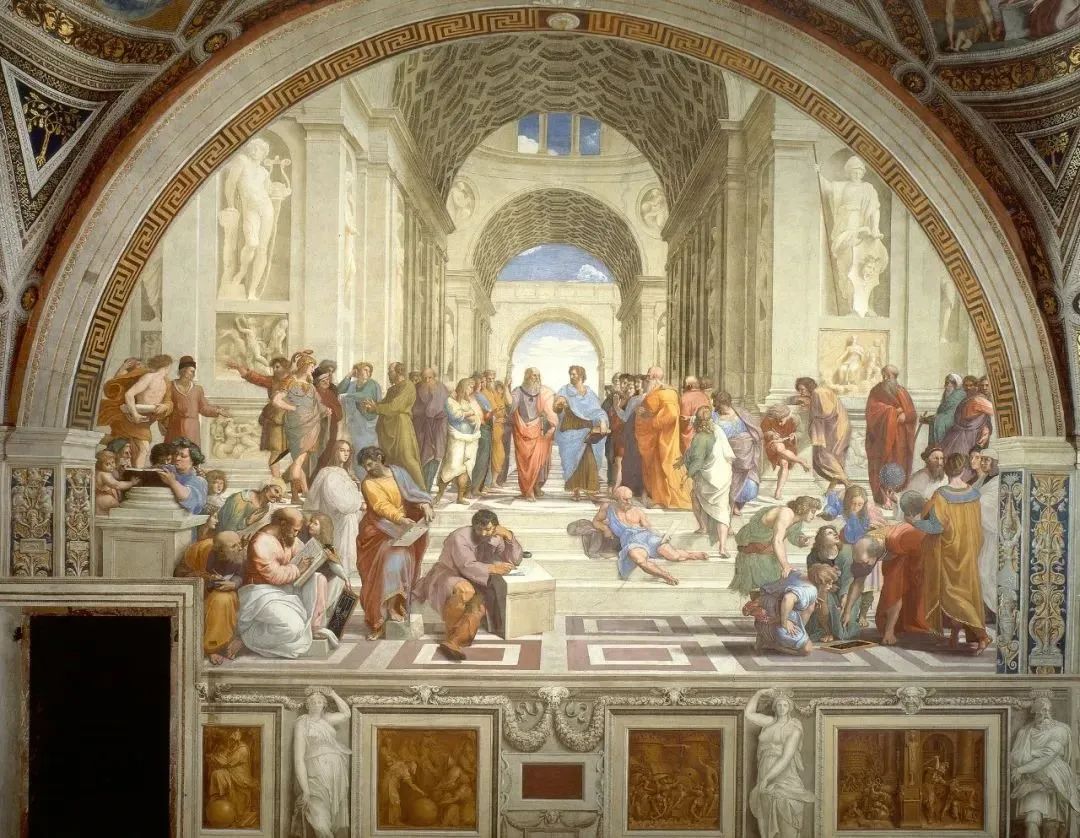
Before this, no one could have imagined that the Vatican would set up camp within the Venice Biennale, a paradise belonging to contemporary artists and active dealers. However, thanks to the efforts of Pope Benedict XVI, the Vatican’s national pavilion finally made its appearance in Venice in 2013.

Tano Festa, “Il Miliziano morente (The Dying Militiaman),” photo emulsion, wood panel, enamel, canvas, 129×170cm, 2013.
05 March to Venice
Michelangelo’s “The Creation of Adam,” fresco, 4000×1400cm, 1508-1512
Although visitors may feel somewhat “retro” after entering the museum – that is, Italian artist Tano Festa’s revisit to “The Creation of Adam.” However, the following two exhibition halls are entrusted to different artists, creating works unrelated to faith – it seems that “rules” are being broken.
Since then, the Vatican has frequently appeared in international exhibitions. In addition to participating in the Venice Biennale, it also appeared at the Milan World Expo in 2015 and participated in the Venice Architecture Biennale for the first time in 2018…

The Vatican’s pavilion at the Milan Expo in 2015.

Architect Norman Foster designed a woodland chapel for the Vatican at the Venice Architecture Biennale in 2018.
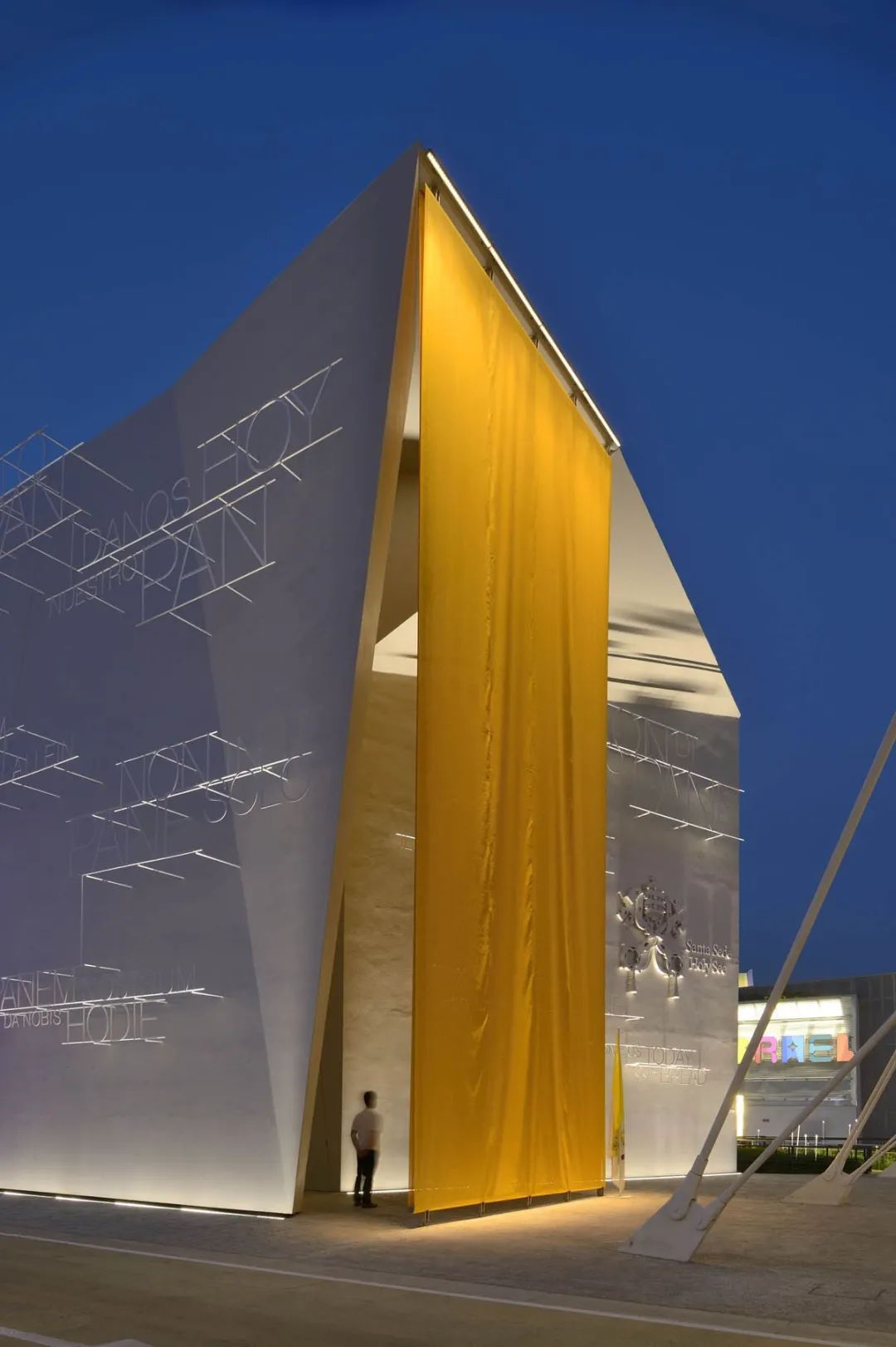
Governing a city-state full of historical sites, Benedict XVI’s role is not only as the head of state but also as the owner of the Vatican Museums and Libraries – he holds a doctorate in sacred theology and is proficient in ten languages. Arnold Nesselrath, former director of the Vatican Museums’ Department of Art History, said that the Pope was closely involved in the seven-year restoration study of the Pauline Chapel, where Michelangelo’s last two frescoes, “The Conversion of Saul” and “The Crucifixion of Saint Peter,” are housed.
“He climbed up the scaffolding and touched ‘The Crucifixion of Saint Peter,'” Nesselrath recalled.

Michelangelo’s “The Conversion of Saul” (The Conversion of Saull), fresco, 625×661cm, 1542-1545.
06 Sheltered Monuments
Michelangelo’s “The Crucifixion of St. Peter” (The Crucifixion of St Peter), fresco, 625×662cm, 1546-1550.

The Matisse Chapel, located in the Vatican Museums, was inaugurated during the pontificate of Pope Benedict XVI. The chapel was donated by Pierre Matisse, the son of the artist, in response to Matisse’s design of the Chapelle du Rosaire de Vence in the French Riviera. The chapel contains large-scale iconic paper-cut paintings and bronze crucifix sculptures.

The Rosary Church
07 Matisse X Vatican
The interior of the Rosary Chapel
Matisse, in his later years, became close friends with Sister Monique Bourgeois, was baptized as a Catholic, and the Rosary Chapel is the only religious artwork he created in his life. Its presence in the Vatican Museums speaks for itself.
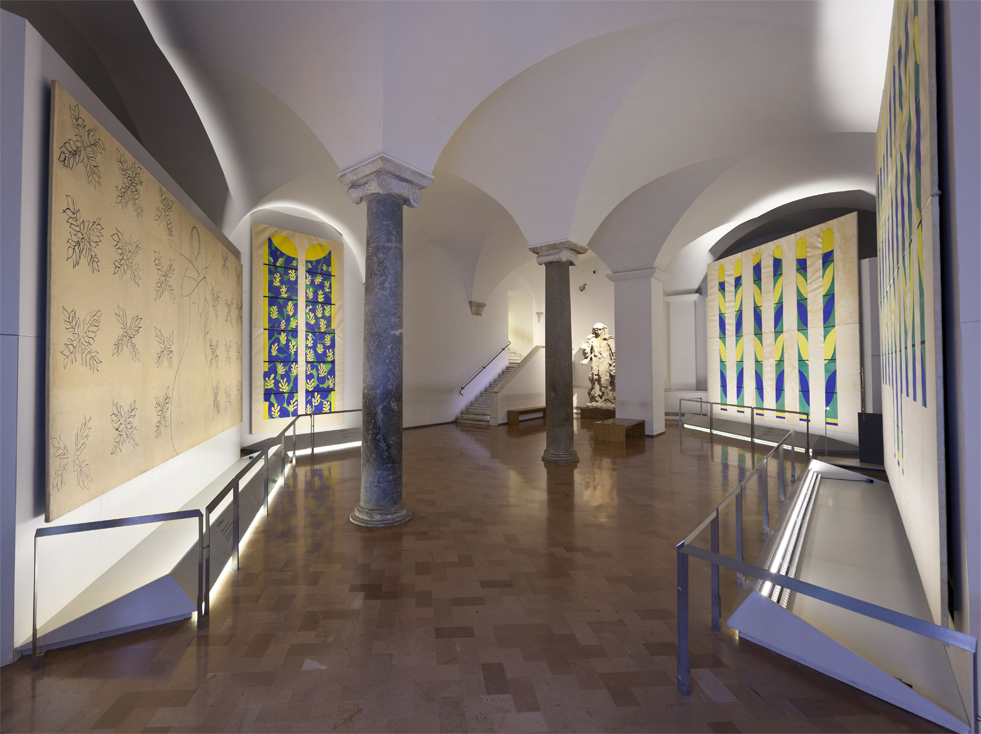
Matisse and Monique Bourgeois

Pope Benedict XVI has delivered numerous speeches throughout his life, with a core doctrine emphasizing the importance of beauty, aiming to revitalize the fragile relationship between the art world and the Vatican. On the 60th anniversary of his ordination (promotion to the priesthood), he expressed his hope that artists could use their works to evoke a more genuine and beautiful desire for existence in people’s hearts.

Pope Benedict XVI

Pope Benedict XVI as depicted by the official portrait painter of the Pope, Natalia Tsarkova
Despite being controversial and having a short tenure, Pope Benedict XVI remains the spiritual leader of 1.2 billion Roman Catholics worldwide. Inspired by him, not only do followers from all walks of life actively respond, but the path of contemporary art in the Vatican also set sail from this point: The current Pope Francis (Pope Francis) warmly embraces contemporary art, and even in 2019, a work co-created by him and an artist has been auctioned…
08 The Pope’s speech
Pope Francis and Argentine artist Alejandro Marmo created sculptures “Christ the Worker” and “The Virgen de Luján” in 2016.
Now, Pope Benedict XVI has passed away, and his body is buried in the underground tomb of St. Peter’s Basilica. The panic and mystery have passed, and the ancient religion and country should be renewed for a long time. Art is still a key color of the Vatican. As he reiterated in a speech: “The world we live in needs beauty to avoid despair.”
